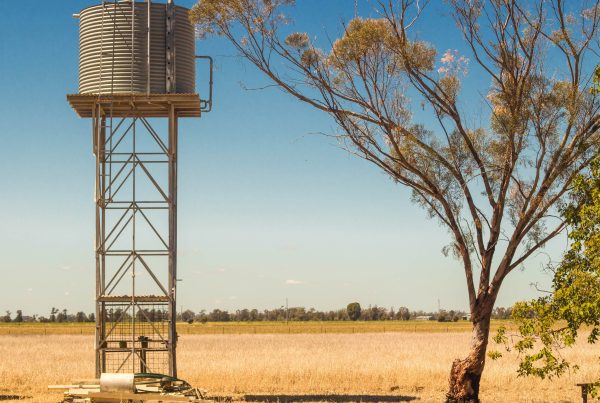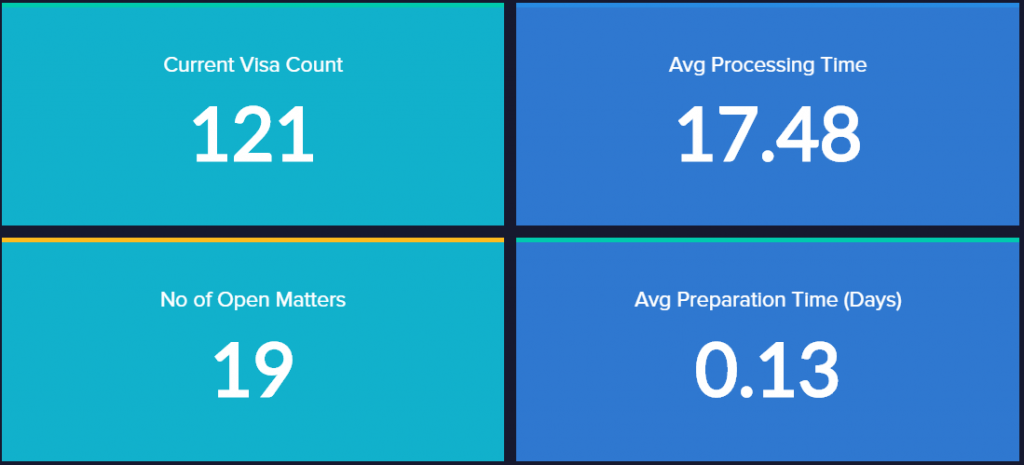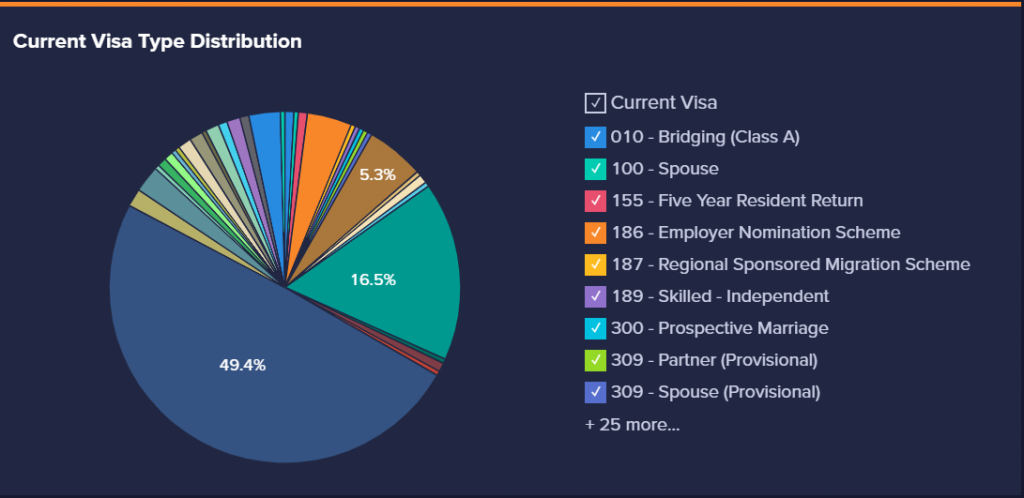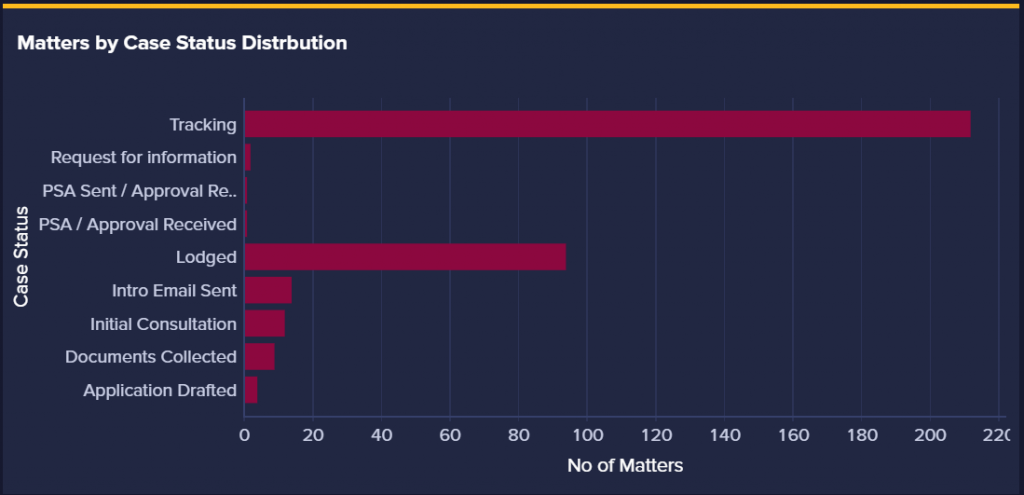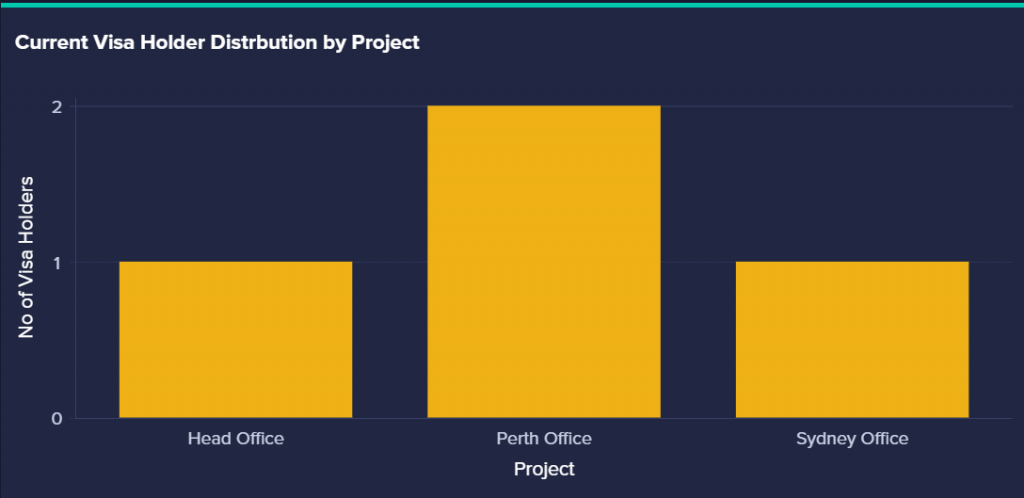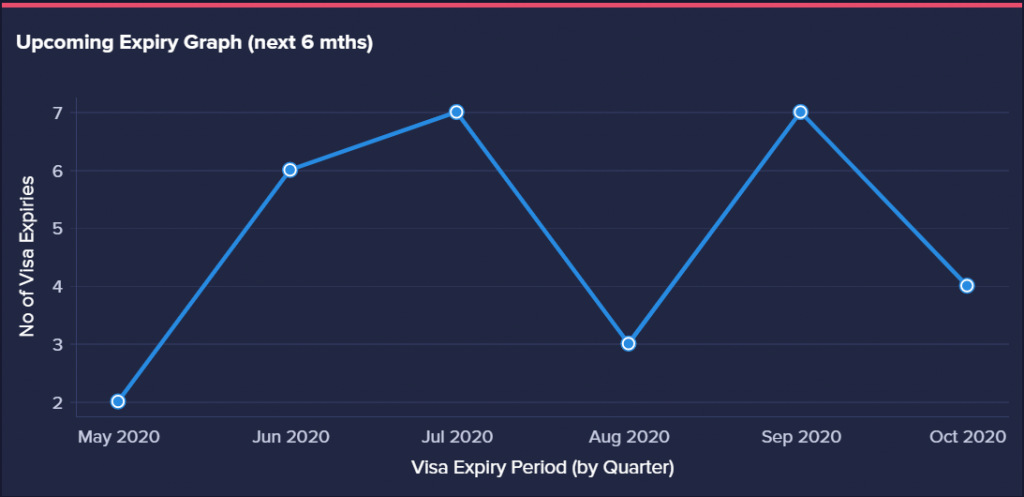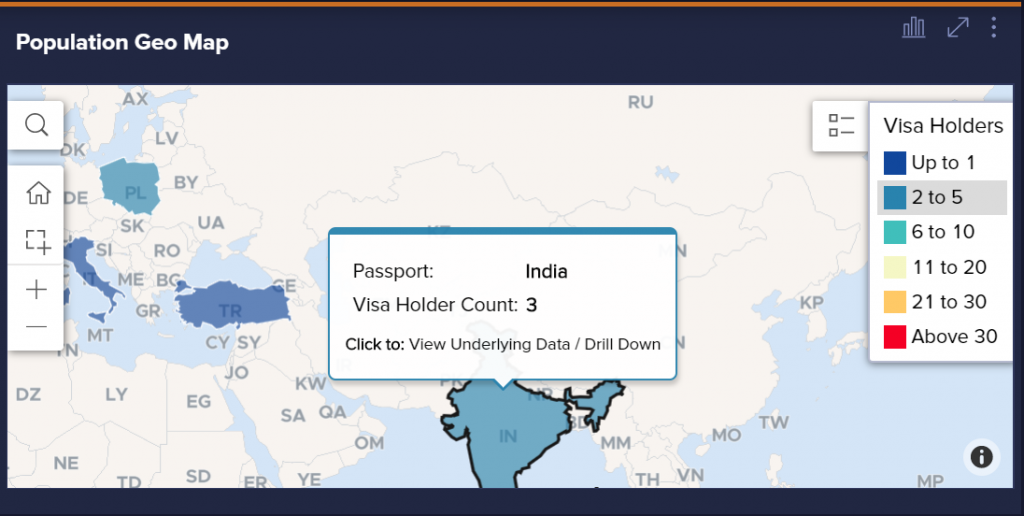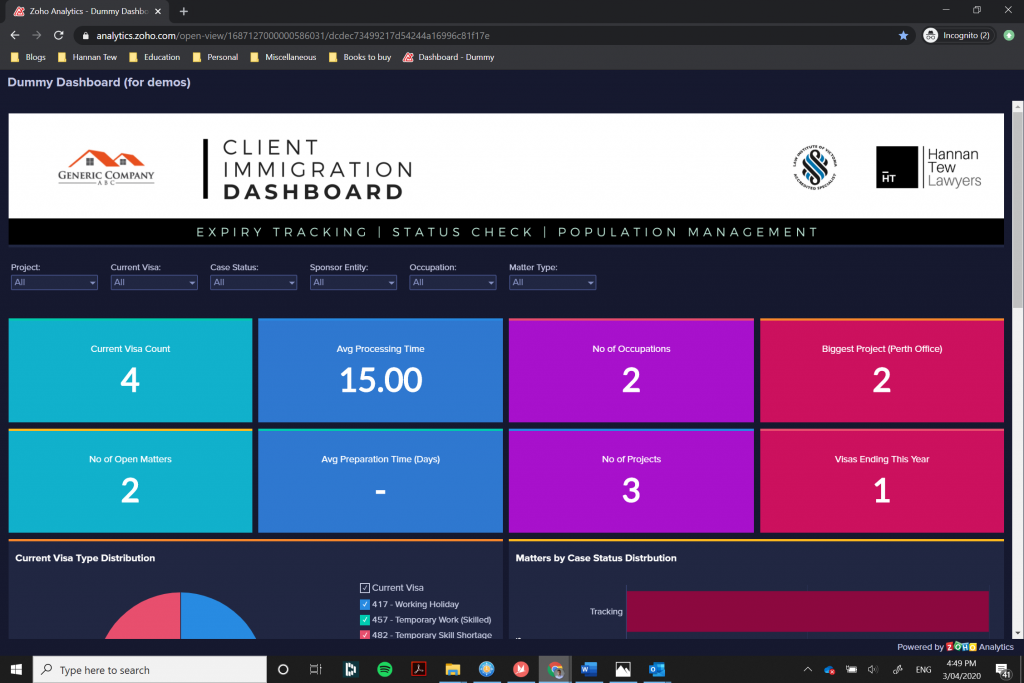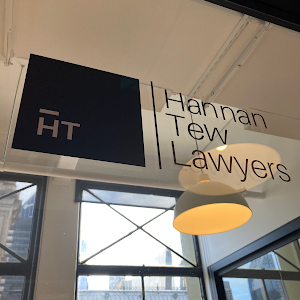The new Skills in Demand (SID) (Subclass 482) visa allows businesses to sponsor certain foreign workers to work in Australia.
The Skills in Demand (Subclass 482) visa is the temporary component of the employer sponsored visa program. See if your business can bring in skilled workers here.
Skills in Demand (Subclass 482) (SID) Visa
The SID visa is an employer-sponsored visa valid for up to 4 years, permitting the holder to live and work in Australia for a sponsoring employer. It has pathways to employer-sponsored permanent residency.
For further information, see our SID visa FAQs section or contact us directly. You can also read more about the permanent employer-sponsored visa at our ENS visa page.
Target Market
- Established businesses:
- in Australia; or
- overseas, seeking to enter Australia
- Employees with job offers in Australia
Visa applicant requirements
- Qualifications suitable for the role
- At least 1 year of full-time experience in similar positions (in the last 5 years)
- Genuine intention to work in the nominated position
- Mandatory licensing, registration or professional membership requirements
- Adequate arrangements for health insurance
- Health, character and English requirements
Company (sponsorship) requirements
- Actively and lawfully operating in Australia or
- Actively and lawfully operating overseas but requiring the visa applicant to establish an Australian business or fulfill contractual obligations
Position (nomination) requirements
- A genuine, full-time position in the sponsor’s business (or that of an associated entity)
- A salary not less than the Core Skills Income Threshold (CSIT) and in line with market rates
- Appropriate Labour Market Testing (LMT) undertaken unless exempt
- An occupation on the relevant occupation list
Eligibility
Skills in Demand (Subclass 482) (SID) Visa
Be aware that there are certain differences in eligibility requirements for the Core Skills stream Skills in Demand (Subclass 482) (SID) Visa and Specialist Skills SID visa applications. In all cases, this is general information, and you should contact us or an immigration lawyer prior to making any decisions.
Sponsorship requirements
The first step is to obtain business sponsorship approval by applying and demonstrating that the business:
- has a legally established and currently operating business
- does not have any adverse information recorded against it
The business then assumes a number of sponsorship obligations, including assuming certain costs, ensuring your employee only works in their nominated occupations, and is subjected to equivalent terms and conditions of employment as your Australian workers. You will only need to apply for sponsorship once every 5 years.
Nomination requirements
The second component is the nomination application, where the business nominates a position within the organisation. Generally, the position must:
- be a genuine, full-time position;
- have a salary not less than the Core Skills Income Threshold (CSIT) and in line with market rates;
- have completed appropriate Labour Market Testing; and
- nominate one of three eligible streams.
Specialist Skills Pathway
The “Specialist Skills Pathway” involves a new streamlined route for highly skilled specialists to enable Australian businesses to quickly recruit top talents in areas of need. To qualify for this pathway, the candidate must be:
- in any occupation (except trades workers, machine operators/drivers, and labourers); and
- earning at least $141,210 (the Specialist Skills Threshold) and no less than Australian workers in the same occupation.
Core Skills Pathway
The Core Skills pathway is the main route for most temporary skilled migrants. This stream broadly mirrors the prior TSS visa program, in that it requires applicants to:
- have an occupation on the “Core Skills Occupation List” (CSOL) – namely, occupations identified by Jobs and Skills Australia as being in shortage; and
- will earn a salary at or above the CSIT and the average market salary.
Unlike the Specialist Skills Pathway, trades workers, machinery operators and drivers, and labourers will be eligible under the Core Skills Pathway subject to being identified on the CSOL, and being paid above the CSIT (including for roles paid above the Specialist Skills Threshold).
Labour Agreement Pathway
The “Labour Agreement” pathway is a highly regulated pathway for lower paid workers with essential skills. Labour Agreements give Australian organisations the ability to enter into specific, negotiated agreements with the Department to access occupations that are not ordinarily sponsorable for work visas to Australia under the SID visa program.
Visa eligibility
The third step is the visa application. At this stage, the main applicant must:
- have relevant skills and qualifications suitable for the occupation;
- have at least 1 year of full-time work experience in a related position (in the last 5 years);
- have a genuine intention to work in the nominated position;
- meet mandatory licensing, registration, or professional membership requirements;
- have adequate arrangements for health insurance; and
- satisfy health, character, and English requirements.
The applicant’s family members can be included in the SID 482 visa as secondary applicants, including their spouse/de facto partners and dependent children. They will be granted the full working rights.
Labour Market Testing
In addition, Labour Market Testing (LMT) must be conducted by the nominator in a specific way to evidence that there was a genuine attempt to hire a local Australian citizen or permanent resident to fulfil the nominated position.
Sponsorship obligations
It is important that the applicant and Standard Business Sponsor follow the statutory obligations and conditions of the Skills in Demand (Subclass 482) (SID) visa if, and when, it is approved.
A breach of the visa conditions may result in visa cancellations for the visa holder and/or prevent the business from sponsoring further workers under the scheme
As a brief summary, a sponsor must:
- advise the DHA about changes to the business, its solvency, and the nature of the visa holder’s work changes from that of the nominated position
- ensure the visa holder works in the occupation which they were nominated for
- ensure the terms and conditions are “fair”, being the same as stated as per the nomination application and not less favourable than that of an equivalent Australian worker
- ensure they do not engage in discriminatory recruitment practices and maintain records to show that discrimination based on visa or citizenship did not occur during the recruitment process for the SID visa holder
- maintain adequate records to evidence compliance with the sponsorship obligations
- provide records and information if requested by a DHA officer and cooperate with DHA inspectors, when required; and
- be responsible for all sponsorship costs, relocation costs, and travel costs of the visa holder
We also have a separate page for more information on sponsorship obligations.
Documents
Skills in Demand (Subclass 482) (SID) Visa
The actual documents required depend on specific circumstances including (but not limited to) family members, health and character, identity, and nominated occupation. All documents not in English will require a translated copy to also be provided. Your Hannan Tew advisor will provide you with a link to the Hannan Tew portal which will set out the specific documents required.
Sponsorship documents
- An Australian Business Number (ABN) registration certificate if you are an Australian-based employer
- An Australian Registered Body Number (ARBN) registration certificate if you are an overseas business registered to operate in Australia
- Evidence of registration in the country you operate in if you do not currently operate in Australia
- If your business has a registered business or trading name, provide a copy of the Business Names Details extract from Australian Securities and Investment Commission’s (ASIC) business name register
- If you are a larger or an established business that has operated over a number of years, provide:
- profit and loss statements
- annual report for the most recently concluded financial year
- If you are a smaller or recently established business, provide:
- tax returns for the most recently concluded financial year
- recent business activity statements (BAS)
- recent bank statements
- If you are a new business provide a business plan which includes contracts to provide services, contracts for lease / purchase of business premises, evidence of employment of staff
- If your business is not yet operating in Australia, show your intention to set up in Australia or that you have a contractual obligation to set up in Australia
- Letter of support
Nomination documents
- Employment contract
- Evidence that the nominated position is being remunerated in line with the annual market salary rate
- Documents to demonstrate financial capacity to pay the market salary rate, such as an annual report (i.e. profit and loss statements, balance sheets) for the most recently concluded financial year
- Evidence of Labour Market Testing (LMT) requirements
- Genuine position summary
- Organisational chart
- Letter of support
Visa documents
- Passport bio data pages of all applicants
- Passport sized photograph of all applicants
- Birth certificate for included children
- If in a:
- married relationship, a copy of your marriage certificate (translated)
- de facto relationship, evidence of at least 12 months of de facto relationship which address the assessing factors
- If children are between 18 and 23, evidence of financial dependency
- If including a child under 18 where a parent is not included, evidence of custody
- CV (up to date)
- Educational qualification certificates
- Employment references from previous employers (if required)
- English testing (if required)
- Registration, licensing and professional membership certificate (if required)
- Police certificates for any country (including Australia) that an applicant aged 16 or over has resided in for 12 months or more (cumulatively);
- Health examinations (if required).
Process
Skills in Demand (Subclass 482) (SID) Visa
There are several steps in applying for a Skills in Demand (SID) (Subclass 482) visa, which may include: ensuring the proposed employer will sponsor (and has relevant approvals), checking the validity of your passport, undertaking an English test, or obtaining references letters, skills assessments, or police clearances.
You may wish to see advice and assistance from a qualified Immigration Lawyer.
Gathering the documents
The first step is preparing all the documentation required for the application to ensure that the Department of Home Affairs (Department) has all the information available to correctly assess your eligibility for the Skills in Demand (SID) (Subclass 482) visa (see documents tab).
All documents relevant to your SID visa are uploaded online (scanned or photographed). Ensure all non-English documentation are translated into English.
Applying for the visa
The Skills in Demand (SID) (Subclass 482) visa application is completed and submitted online via ImmiAccount, a portal managed by the Department. You will need to:
- Log-in or create an ImmiAccount on the Department’s website
- Complete the visa application form
- Attach relevant documents
- Pay the visa application charges and lodge the application.
Ensure that all family members accompanying the main visa applicant are also added to your visa application.
After application
The Department will send an acknowledgement letter (via email and/or the ImmiAccount portal messaging system) once your application has been submitted and received.
The standard processing times for the Skills in Demand (SID) Subclass 482 visa as at December 2024, is as follows:
- 50% of applications: 60 days
- 90% of applications: 4 months
No updates on the application will be provided during the standard processing time. If more information is required, this will be requested via email. You can read more about what to expect after your visa is lodged at our blog.
Do not travel to Australia until the outcome of your visa application is received and you have been granted the visa (or you otherwise obtain another visa).
Be sure to advise the Department if there are any mistakes on your application, or if your personal circumstances change after you have applied.
Visa outcome
The Department will advise you of the outcome of your Skills in Demand (SID) (Subclass 482) visa application in writing.
If your visa application is successful, you will be provided a PDF grant letter, which advises of:
- your visa grant number
- the date your visa starts and ends
- applicable visa conditions.
This visa is electronically linked to your passport, so you would not need a visa label or to attend any Embassy/Consulates. Retain an electronic copy of this grant letter for when you arrive, and whilst you live in Australia.
If you are refused a visa, you will be advised in writing:
- the reason(s) for the unsuccessful application and
- whether you have a right to review the decision
It is vital that you read and understand the refusal notification clearly to understand the timeframe and means of appeal. You can find more information about the appeal process at our Visa Refusals and Review page.
Client Dashboard
Skills in Demand (Subclass 482) (SID) Visa
Preparing visa applications necessarily requires the collation of an abundance of data from both visa applicants and sponsoring organisations. We provide secure access to beautiful visualisations of this data to allow you to easily track your visa populations. You can customise fields, visualisation types, branding, colour schemes, placements and widgets to ensure you can easily sift through the data in a way that suits your business needs.
SID by Industry
SID Visas for the Technology Industry
Australia’s tech industry has spawned its fair share of tech unicorns and global success stories. In order to continue Australia’s enviable economic growth, it’s imperative that our immigration policy is flexible enough to seize the significant economic and social opportunities that digital technologies bring. The adoption of new technologies is creating well-paying jobs for people of all qualifications, improvements in quality of life, increased connectedness and benefits for consumers. As a country of just under 27 million, skilled migration is an important way of attracting highly-skilled people who can help grow new opportunities and address short-term gaps. It makes strategic and economic sense that the industry needs to complete for global talent where suitably skilled Australians are not available.
With that in mind, and our years of experience working with companies in the tech industry (from bootstrapped startups to multinational giants), here’s a brief guide to how to utilise the SID visa to retain global talent in Australia.
How is the SID visa used in the tech sector?
The usual pathway for companies to bring in foreign skilled workers is through the SID visa. The SID visa is a temporary visa (valid for up to 4 years) for skilled foreign workers in certain occupations. It also has pathways to permanent residence, though this is dependent on a number of factors including age or salary. From a business perspective, it might also be worthwhile considering some alternative visas:
- The 400 visa is a temporary visa which permits highly skilled individuals to obtain short term visas for up to 3 months (in some cases, 6 months).
- The National Innovation visa which permits streamlined pathways to permanent residence, and can often side step conventional requirements (e.g. age or occupations).
Can the SID visa be used by start-ups?
One of the key challenges for the SID visa is that a case officer must be satisfied that the position is genuine. In our experience, case officers apply this criterion more onerously to smaller companies (<10 employees). This can make it difficult for early stage / bootstrapped startups who have a brilliant concept but need to secure global talent to scale.
Despite the challenges for start-ups, applications may still be possible with as much supporting evidence as possible including:
- a breakdown of the organisational structure (organisation chart) to indicate how the position fits into the business activity
- an outline of the goods or services produced by the business and how the position and its associated duties contributes to maintaining or enhancing the volume and/or quality of these outputs (this may include detailed and quantifiable plans for future expansion)
- evidence that the position has existed and been previously occupied, but has become vacant through attrition or is currently occupied by a temporary resident
- increase in business activity over previous months or years (for example, new contracts won, increased revenue, funding/grants received) requiring persons in the nominated occupation
- hours of operation and/or growth in customer numbers which explain why additional staffing may be required – that is, to meet increased demand and ensure coverage across the working week
- evidence as to what percentage of the sponsor’s workforce are Australian citizens or permanent residents, and
- overtime work, or increases in overtime work, for employees currently in the nominated occupation.
Having worked with several start-ups through the challenging initial stages, we’re well placed to provide assistance and guidance.
What occupations are considered relevant in the tech sector?
For most skilled visa applications, the described work and the visa applicant must both align to a specific occupation on Australia’s skilled occupation lists. For SID visas the occupation is listed here.
A few of the relevant occupations include:
| Occupation | ANZSCO | ANSCO Description |
| Analyst Programmer | 261311 | Analyses user needs, produces requirements documentation and system plans, and encodes, tests, debugs, maintains and documents programs and applications |
| Chief Information Officer | 135111 | Plans, organises, directs, controls and coordinates the ICT strategies, plans and operations of an organisation to ensure the ICT infrastructure supports the organisation’s overall operations and priorities. |
| Computer Network and Systems Engineer | 263111 | Plans, develops, deploys, tests and optimises network and system services, taking responsibility for configuration management and overall operational readiness of network systems, especially environments with multiple operating systems and configurations, and provides troubleshooting and fault-finding services for network problems. |
| Content Creator (Marketing) | 225114 | Creates and publishes text, photos and videos designed to promote businesses, products or services to social media and digital platforms, to grow an audience, build brand awareness and increase sales. Schedules the release of, and updates to, marketing content on these platforms. |
| Cyber Governance Risk and Compliance Specialist | 262114 | Lead the governance, risk and compliance for cyber security. |
| Cyber Security Advice and Assessment Specialist | 262115 | Conduct risk and security control assessments, interpret security policy and contribute to the development of standards and guidelines, review information system designs, provide guidance on security strategies to manage identified risks, provide specialist advice, explain systems security and the strengths and weaknesses. |
| Cyber Security Operations Coordinator | 262118 | Leads the coordination, and response to complex cyber security incidents and hunt investigations, manage tasks across various teams for incident response and hunt operations, advise leadership on current operational collaborations and contribute toward strategic planning, facilitate incident response engagements, assess technical information to develop key messaging. |
| Cyber Security Architect | 262117 | Designs a security system or major components of a security system and may head a security design team building a new security system. |
| Cyber Security Analyst | 262116 | Analyses and assesses vulnerabilities in the infrastructure (software, hardware, networks), investigates available tools and countermeasures to remedy the detected vulnerabilities, and recommends solutions and best practices. Analyses and assesses damage to the data/infrastructure as a result of security incidents, examines available recovery tools and processes, and recommends solutions. |
| Cyber Security Engineer | 261315 | Designs, develops, modifies, documents, tests, implements, installs and supports cyber security software applications and systems to ensure they are fully integrated. |
| Data Analyst | 224114 | Gathers, processes, analyses and interprets data using data analytical tools. Communicates findings through reports and data visualisations, such as charts and infographics. |
| Data Scientist | 224115 | Applies analytical techniques and scientific procedures to datasets by creating algorithms and using statistical models. Builds and deploys analytics frameworks, such as machine learning, to obtain information for strategic planning and decision-making. |
| Database Administrator | 262111 | Plans, develops, configures, maintains and supports an organisation’s database management system in accordance with user requirements ensuring optimal database integrity, security, backup, reliability and performance. |
| Devops Engineer | 261316 | Facilitates and undertakes communication, collaboration, integration and automation to improve efficiency and workflow across different specialist IT teams. |
| Developer Programmer | 261312 | Interprets specifications, technical designs and flow charts, builds, maintains and modifies the code for software applications, constructs technical specifications from a business functional model, and tests and writes technical documentation. |
| Hardware Technician | 313111 | Supports and maintains computer systems and peripherals by installing, configuring, testing, troubleshooting, and repairing hardware. |
| ICT Account Manager | 225211 | Manages sale of computer hardware, software and services to existing account clients and identifies further sales opportunities within these accounts, builds new account clients, manages customer satisfaction and retention, and coordinates the preparation and presentation of ICT sales proposals and tenders. |
| ICT Business Analyst | 261111 | Identifies and communicates with users to formulate and produce a requirements specification to create system and software solutions. |
| ICT Business Development Manager | 225212 | Identifies and generates new ICT business opportunities to further improve market share and awareness by gaining an understanding of customers’ ICT needs and promoting goods and services to these customers. May manage some key customer accounts. |
| ICT Customer Support Officer | 313112 | Provides support, education and guidance in the deployment and maintenance of computer infrastructure and the diagnosis and resolution of technical problems and issues. May work in a call centre. |
| ICT Project Manager | 135112 | Plans, organises, directs, controls and coordinates quality accredited ICT projects. Accountable for day-to-day operations of resourcing, scheduling, prioritisation and task coordination, and meeting project milestones, objectives and deliverables within agreed timeframes and budgets. |
| ICT Managers nec | 135199 | This occupation covers ICT Managers not elsewhere classified. |
| ICT Sales Representative | 225213 | Develops and converts sales opportunities into sales of computer hardware, software and ICT services. |
| ICT Quality Assurance Engineer | 263211 | Creates, maintains and manages technical quality assurance processes and procedures to assess efficiency, validity, value and functional performance of computer systems and environments, and audits systems to ensure compliance with, and adherence to, accredited internal and external industry quality standards and regulations. May supervise the work of ICT quality assurance teams. |
| ICT Systems Test Engineer | 263213 | Specifies, develops and writes test plans and test scripts, produces test cases, carries out regression testing, and uses automated test software applications to test the behaviour, functionality and integrity of systems, and documents the results of tests in defect reports and related documentation. |
| ICT Support and Test Engineer nec | 263299 | This occupation group covers ICT Support and Test Engineers not elsewhere classified. |
| Multimedia Designer | 232413 | Plans, designs and develops the production of digitally delivered information, promotional content, instructional material and entertainment through online and recorded digital media using static and animated information, text, pictures, video and sound to produce information and entertainment tailored to an intended audience and purpose. |
| Multimedia Specialist | 261211 | Creates and manipulates computer animation, audio, video and graphic image files into multimedia programs to produce data and content for CD-ROMs, information kiosks, multimedia presentations, websites, mobile telephone resources, electronic gaming environments, e-commerce and e-security solutions, and entertainment and education products. |
| Network Administrator | 263112 | Installs and maintains hardware and software, documents diagnosis and resolution of faults, manages user passwords, security and inventory documentation, ensures the efficient performance of servers, printers and personal computers, and attends to other operational tasks. May also perform tasks such as help desk support and user training. |
| Network Analyst | 263113 | Researches and analyses network architecture, and recommends policies and strategies for designing, planning and coordinating an organisation’s network such as the total system environment and architecture. May also perform operational tasks such as monitoring system performance, software and hardware upgrades, backups, support and network maintenance. |
| Penetration Tester | 261317 | Creates test cases using in-depth technical analysis of risks and typical vulnerabilities, and produces test scripts, materials and packs to test new and existing software or services. Plans, coordinates and conducts cyber threat emulation activities in support of certification, accreditation and operational priorities to verify deficiencies in technical security controls. |
| Software Tester | 261314 | Specifies, develops and writes test plans and test scripts, produces test cases, carries out regression testing, and uses automated test software applications to test the behaviour, functionality and integrity of computer software, and documents the results of tests in defect reports and related documentation. |
| Software Engineer | 261313 | Designs, develops, modifies, documents, tests, implements, installs and supports software applications and systems. |
| Systems Administrator | 262113 | Plans, develops, installs, troubleshoots, maintains and supports an operating system and associated server hardware, software and databases ensuring optimum system integrity, security, backup and performance. |
| Systems Analyst | 261112 | Evaluates processes and methods used in existing ICT systems, proposes modifications, additional system components or new systems to meet user needs as expressed in specifications and other documentation. |
| Web Administrator | 313113 | Designs, builds and maintains websites, and provides web technology solutions and services. |
| Web Designer | 232414 | Plans, designs, develops and prepares information for Internet publication with particular emphasis on the user interface, ease of navigation and location of information using text, pictures, animation, sound, colours, layout and data sources to deliver information tailored to an intended audience and purpose. |
| Web Developer | 261212 | Plans, produces and maintains websites using web programming languages, software applications, technologies and databases together with specifications of user needs, often in conjunction with other ICT Professionals such as Business Analysts, Web Designers and network and usability specialists. |
The new CSOL has recognised updated occupations that were not formerly recognised by prior immigration occupation lists such as Data Analyst, Data Scientist, and some of the cyber security occupations.
As experienced immigration lawyers working closely with organisations in the tech sector, we can assist you in finding the appropriate occupation for your needs.
SID by Industry
SID Visas for the Energy & Infrastructure Industry
For 30 years, Australia has been a global innovation leader in infrastructure planning, financing, and delivery. Today, the country faces new challenges with COVID, an aging population, urbanisation, and technology disruptions. In particular, the demand for engineers across Australia continues to climb even as graduate numbers slow, a trend that has put pressure on industry majors as they work to secure the best of a tightening talent pool.
Hannan Tew has been working closely with some of the largest infrastructure companies in Australia (and globally), providing strategic advice to management workforce mobility and ensuring that appropriate visas are obtained to meet delivery timelines.
How is the SID visa used in the energy / infrastructure sector?
The usual pathway for companies to bring in foreign skilled workers is through the SID visa. The SID visa is a temporary visa (valid for up to 4 years) for skilled foreign workers in certain occupations. It also has pathways to permanent residence, though this is dependent on a number of factors including age or salary. From a business perspective, it might also be worthwhile considering some alternative visas:
- The 400 visa is a temporary visa which permits highly skilled individuals to obtain short term visas for up to 3 months (in some cases, 6 months).
- The National Innovation visa which permits streamlined pathways to permanent residence, and can often side step conventional requirements (e.g. age or occupations).
Do Engineers require licencing and registration?
As part of the ANZSCO description, most Engineering occupations are marked as “Registration or licensing may be required”. Several States have implemented a full registration system, where individuals either need to hold such status, or work under the supervision of a fully registered engineer. Hannan Tew Lawyers have worked with companies bringing in global talent in multiple state jurisdictions so are well placed to provide guidance on these requirements in your unique circumstances.
What occupations are considered relevant in the energy / infrastructure sector?
For most skilled visa applications, the described work and the visa applicant must both align to a specific occupation on Australia’s skilled occupation lists. For SID visas the occupation is listed here.
A few of the relevant occupations include:
| Occupation | ANZSCO | Description |
| Chemical Engineer | 233111 | Designs and prepares specifications for chemical process systems and the construction and operation of commercial-scale chemical plants, and supervises industrial processing and fabrication of products undergoing physical and chemical changes. |
| Civil Engineer | 233211 | Plans, designs, organises and oversees the construction and operation of dams, bridges, pipelines, gas and water supply schemes, sewerage systems, airports and other civil engineering projects. Registration or licensing may be required. |
| Civil Engineering Draftsperson | 312211 | Prepares detailed drawings and plans for civil engineering work in support of Civil Engineering Professionals and Engineering Technologists. Registration or licensing may be required. |
| Civil Engineering Technician | 312212 | Conducts tests of construction materials, prepares sketches and tabulations, and assists in estimating costs in support of Civil Engineering Professionals and Engineering Technologists. Registration or licensing may be required. |
| Construction Project Manager | 133111 | Plans, organises, directs, controls and coordinates construction of civil engineering and building projects, and the physical and human resources involved in the construction process. Registration or licensing is required. |
| Geotechnical Engineer | 233212 | Plans, directs and conducts survey work to analyse the likely behaviour of soil and rock when placed under pressure by proposed structures, and designs above and below ground foundations. Registration or licensing may be required. |
| Geologist | 234411 | Studies the composition, structure and other physical attributes of the earth to increase scientific knowledge and to develop practical applications in fields such as mineral exploitation, civil engineering, environmental protection and rehabilitation of land after mining. |
| Engineering Manager | 133211 | Plans, organises, directs, controls and coordinates the engineering and technical operations of an organisation. |
| Engineering Technologist | 233914 | Analyses and modifies new and existing engineering technologies and applies them in the testing and implementation of engineering projects. Registration or licensing may be required. |
| Environmental Engineer | 233915 | Assesses the impact on air, water, soil and noise levels in the vicinity of engineering projects, plans and designs equipment and processes for the treatment and safe disposal of waste material, and assesses what may cause problems for the environment in the long-term. Registration or licensing is required. |
| Fitter and Turner | 323212 | Fits, assembles and welds metal parts and subassemblies to fabricate production machines and other equipment. |
| Fitter (General) | 323211 | Fits and assembles metal parts and subassemblies to fabricate production machines and other equipment. |
| Fitter Welder | 323213 | Fits, assembles and welds metal parts and subassemblies to fabricate production machines and other equipment. |
| Materials Engineer | 233112 | Investigates the properties of metals, ceramics, polymers and other materials and assesses and develops their engineering and commercial applications. Registration or licensing may be required. |
| Mechanical Engineering Draftsperson | 312511 | Prepares detailed drawings and plans of mechanical engineering work in support of Mechanical Engineers and Engineering Technologists. |
| Metal Machinist (First Class) | 323214 | Sets up and operates machine tools to shape and form metal stock and castings to fine tolerances, using detailed drawings and specifications. |
| Quantity Surveyor | 233213 | Estimates and monitors construction costs from the project feasibility stage, through tender preparation, to the construction period and beyond. Registration or licensing is required. |
| Structural Engineer | 233214 | Analyses the statical properties of all types of structures, tests the behaviour and durability of materials used in their construction, and designs and supervises the construction of all types of structures. Registration or licensing may be required. |
| Surveyor | 232212 | Plans, directs and conducts survey work to determine, delineate, plan and precisely position tracts of land, natural and constructed features, coastlines, marine floors and underground works, and manages related information systems. Registration or licensing may be required. |
| Transport Engineer | 233215 | Plans and develops transport systems to improve infrastructure efficiency and the cost effectiveness of moving people and freight. Registration or licensing may be required. |
| Electrical Engineer | 233311 | Designs, develops and supervises the manufacture, installation, operation and maintenance of equipment, machines and systems for the generation, distribution, utilisation and control of electric power. Registration or licensing may be required. |
| Industrial Engineer | 233511 | Investigates and reviews the utilisation of personnel, facilities, equipment and materials, current operational processes and established practices, to recommend improvement in the efficiency of operations in a variety of commercial, industrial and production environments. Registration or licensing may be required. |
| Mechanical Engineer | 233512 | Plans, designs, organises and oversees the assembly, erection, operation and maintenance of mechanical and process plant and installations. Registration or licensing may be required. |
| Metal Fabricator | 322311 | Marks off and fabricates structural steel and other metal stock to make or repair metal products and structures such as boilers and pressure vessels. |
| Pressure Welder | 322312 | Assembles, welds and repairs pressure vessels and pipes to relevant standards. |
| Production or Plant Engineer | 233513 | Plans, directs and coordinates the design, construction, modification, continued performance and maintenance of equipment and machines in industrial plants, and the management and planning of manufacturing activities. Registration or licensing may be required. |
| Welder (First Class) | 322313 | Fabricates and repairs metal products using various welding techniques. |
The above doesn’t capture all occupations which are in demand in Australia. That’s why the Department has an occupation that is Not Elsewhere Classified (or NEC). The occupation of Engineering Professionals (NEC) can be used (within reason) to capture otherwise not described occupation. As experienced immigration lawyers within the energy / infrastructure sector, we can assist you in finding the appropriate occupation for your needs.
SID by Industry
SID Visas for the Healthcare Industry
Australia’s healthcare industry is one of the fastest growing aspects of the labour market, and one of the largest users of the SID Subclass 482 visa program. With the increasing demand on the health system due to an ageing population, the number of health practitioners in Australia is likely to continue to grow.
Hannan Tew has been working closely with some of the largest healthcare companies in Australia including hospitals, medical centres, imaging/radiology practices, IVF practices, aged care facilities, medical device/equipment manufacturers, and medical recruiters.
How is the SID visa used in the healthcare sector?
The main visa used by businesses in the healthcare sector is the SID visa. This allows the business to sponsor an employee for up to 4 years, and has pathways to employer sponsored permanent residency.
Certain “exempt” occupations (typically medical specialists) allow businesses to sponsor SID visa holders and engage them as “contractors” rather than as employees.
Do medical practitioners require licencing and registration?
Healthcare professionals who wish to work in Australia must be registered with the responsible medical board. This includes general medical practitioners, nurses, pharmacists, medical specialists, and other health professionals. You can read more about the registration process and search the national register on AHPRA’s website.
For some occupations, the registration/licensing component is also equivalent to a “skills assessment” which enables them to apply for one of the many routes to Australian permanent residency. For many other occupations (such as nurses), there is a separate skills assessment process where registration may amount to one component of the assessment.
Other nuances
Medical occupations have several nuances depending on the occupation. For example:
- nurses from overseas may need to undertake a bridging program in Australia (and require specific visas to undertake them), or are subject to enterprise agreements (and need to ensure that their wages are accurately stated to avoid underpayment and breaching sponsorship obligations);
- exempt specialist practitioners may be able to be engaged as contractors (rather than employees under written contracts of employment) but this could affect their eligibility for employer-sponsored permanent residency;
- higher levels of English competency are generally required to obtain registration in Australia (than ordinarily required for a SID visa); and
- There are certain age exemptions applicable to regional medical practitioners for employer sponsored permanent residency.
To ensure that you do not fall foul of these requirements, you may wish to contact an experienced immigration law practitioner. Hannan Tew has significant experience advising across all areas of immigration law, including to both businesses and professionals in the healthcare industry.
What occupations are considered relevant in the healthcare sector?
For most skilled visa applications, the described work and the visa applicant must both align to a specific occupation on Australia’s skilled occupation lists.
These occupations generally relate to specialist medical practitioners and nurses. A few of the relevant occupations include:
| Occupation | ANZSCO | Description |
| General Medical Practitioner | 253111 | Diagnoses, treats and prevents human physical and mental disorders and injuries |
| Anaesthetist | 253211 | Provides direct medical care to patients requiring general or local anaesthesia for surgical, diagnostic and other procedures such as prevention of pain and maintenance of body function |
| Various Specialist Physicians | 253311
253312 253313 253314 253315 253316 253317 253318 253321 253322 253323 253324 253399 |
Diagnose and treat internal human disorders and diseases using specialist testing, diagnostic and medical techniques. Occupations include: Specialist Physician (General Medicine), Cardiologist, Clinical Haematologist, Medical Oncologist, Endocrinologist, Gastroenterologist, Intensive Care Specialist, Intensive Care Specialist, Neurologist, Paediatrician, Renal Medicine Specialist, Rheumatologist, Thoracic Medicine Specialist, and Specialist Physicians nec
|
| Various surgeons | 253511
253512 253513 253514 253515 253516 253517 253518 253521 |
Perform surgery to correct deformities, repair injuries, prevent and treat diseases, and improve human functioning and appearance. Occupations include: Surgeon (General), Cardiothoracic Surgeon, Neurosurgeon, Orthopaedic Surgeon, Otorhinolaryngologist, Paediatric Surgeon, Plastic and Reconstructive Surgeon, Urologist, Vascular Surgeon |
| Various Other Medical Practitioners | 253911
253912 253913 253914 253915 253917 253918 253999 |
This group covers other medical practitioners not elsewhere classified including: Dermatologist, Emergency Medicine Specialists, Obstetricians and Gynaecologist, Ophthalmologist, Pathologist, Diagnostic and Interventional Radiologist, Radiational Oncologist, Medical Practitioners nec. |
| Various Registered Nurses | 254411
254412 254413 254414 254415 254416 254417 254418 254421 254422 254423 254424 254499 |
Provides nursing care to patients in hospitals, aged care and other health care facilities. Occupations include Nurse Practitioner and various Registered Nurses in the areas of: Aged Care, Child and Family Health, Community Health, Critical Care and Emergency, Developmental Disability, Disability and Rehabilitation, Medical, Medical Practice, Mental Health, Perioperative, Surgical, and Registered Nurse nec (not elsewhere classified). |
| Midwife | 254111 | Provides care and advice to women during pregnancy, labour and childbirth, and postnatal care for women and babies in a range of settings such as the home, community, hospitals, clinics and health units |
| Enrolled Nurse | 411411 | Provides nursing care to patients in a variety of health, aged care, welfare and community settings under the supervision of Registered Nurses |
SID Visas
Frequently Asked Questions
What is a Skills in Demand (SID) Subclass 482 visa?
The Skills in Demand (SID) Subclass 482 visa is employer-sponsored, permitting a foreign national for a visa to live and work in Australia for the sponsoring organisation for up to 4 years. It can be renewed, allows the visa applicant to include certain family members, and has pathways to employer-sponsored permanent residency.
It requires the sponsoring organisation to become an approved business sponsor, and then subsequently sponsor a person for the SID Subclass 482 visa.
There are three main streams under this visa, please see the “Eligibility” tab for further information about each stream and the relevant criteria for each.
How is the Skills in Demand visa different to the TSS visa?
Who is eligible for the Skills in Demand Visa?
Broadly speaking an individual who wishes to apply for the SID visa, needs to have:
- an employer willing to sponsor them (who need to apply to be an approved business sponsor);
- satisfy one of the three available stream specific criteria;
- have appropriate qualifications for the position;
- have at least one year of full-time relevant work experience to their nominated occupation (in the last 5 years);
- satisfy English, health and character criteria.
Please see the “Eligibility” tab for further information about each stream and the relevant criteria for each. For a complete, updated list of occupations or advice as to whether your role falls within a relevant occupations list, speak with us today on (03) 9016 0484 or book a consultation online with our immigration lawyers.
What are the stages of an eventual Subclass 482 / SID visa application?
There are three stages to the SID visa process: the sponsorship, the nomination, and the visa.
Standard Business Sponsorship (SBS) – This is the permission required by any company before it can sponsor employees onto employer sponsored visas. The business must demonstrate that it is lawfully and actively operating. Upon approval, an SBS is valid for up to five years.
Nomination – This requires the organisation to ‘nominate’ a position, provide annual earnings in line with relevant salary threshold and in line with Australian market rates, and in certain instances nominate an occupation on a list of sponsorable occupations. Most organisations will need to undertake Labour Market Testing (LMT), unless exempt.
Visa – The visa applicant must demonstrate that they hold the necessary skills (qualifications/work experience), and satisfy identity, English, health and character requirements.
How long is the SID visa valid for and can it be extended?
SID visas can be granted for up to four years, and you can request a validity in 1 year instalments. There are no limitations on renewal, as long as the visa applicant continues to satisfy the criteria for grant of the visa.
Can I commence work before my SID visa application is approved?
Unless you have an existing visa with appropriate work authorisation, you must not commence work with your employer until your SID visa is approved.
I hold a current visa in Australia. What happens if it expires before my SID visa is granted?
If you are in Australia and hold a substantive visa when we lodge your SID visa application, you will be granted a Bridging Visa A (BVA). The BVA will allow you to remain in Australia during processing of your SID visa.
Note that the BVA will not allow you to re-enter Australia if you depart during processing of your SID visa. You will need to seek special permission to do so. Please notify us immediately if you have travel plans during the processing of your SID visa as it can impact the application.
Do all pathways of the Skills In Demand visa lead to permanent residency?
All SID visa holders may be eligible for permanent residency via the Temporary Residence Transition (TRT) stream of the Employer Nomination Scheme (ENS) (Subclass 186) visa after being employed in their nominated occupation on a SID visa in Australia for at least 2 years.
How much does the Skills in Demand visa cost?
You can refer to our pricing guide for an estimate of fixed fee professional fees. You will also need to pay government fees for this visa application.
Feel free to explore our cost calculator, or contact a member of our team directly for a full breakdown of fees.
Who can pay the costs for a SID Subclass 482 visa?
Under sponsorship obligations, approved business sponsors must not transfer costs associated with becoming an approved business sponsor or obtaining an approved nomination. This includes not only government fees related to the above, but can also include immigration lawyer fees. Speak with an immigration lawyer early to determine which costs can be paid by a visa applicant.
Can I apply for the Skills in Demand Visa while in Australia on another visa?
Can I transition from a Student visa to a Skills in Demand Visa?
What is the processing time for each pathway?
Is there any age limit for applying for the visa?
Can I include my family in my SID Subclass 482 visa?
Yes, you can include anybody who is a “Member of the Family Unit”, which generally includes your spouse/de facto partner, and certain children in your visa application.
They will also receive a SID visa valid for the same duration as the main applicant.
There are specific requirements for children over the age of 18 to demonstrate dependency. Children 23 years or above cannot be included except in very limited circumstances.
You cannot include parents or siblings in your visa application, even if they are dependent on you.
I have a dependent partner, can they work?
Yes, your partner will have full work authorisation in Australia which means they can work for any employer in any capacity.
Can my children study?
Yes. However, different States / Territories in Australia have different requirements and fees may be applicable. We strongly recommend that you explore this with the education provider directly.
Do I need a skills assessment for my SID / Subclass 482 visa?
In most cases, you do not require a skills assessment for a SID visa application. However, certain occupations and passport holders do require a skills assessment (for example, Chefs from Vietnam unless exempt).
Contact us to speak to an immigration lawyer and determine the requierments for your specific occupation.
Are there any qualification requirements for the Skills in Demand visa?
Do I need health, character and / or English assessments for a SID visa application?
Depending on your country of nationality, you may require health examinations to process your visa. Hannan Tew Lawyers will advise you of the relevant assessments once you have completed the information questionnaire.
You will need to obtain an English assessment unless one of the following applies:
- You hold a passport from the UK, US, Canada, New Zealand or Ireland
- You have completed a minimum of five years of full-time study in a
secondary and/or higher education institution where the instruction was
delivered in English - You are in an excluded occupation
- You are sponsored by an Overseas Business Sponsor and are paid a salary of at least AUD 96,400 per annum.
You will need to provide police clearances for all countries in which you have resided for 12 months or more in the last 10 years. There are limited exemptions to this if your employer is an accredited business sponsor.
Should I just book my health examinations and obtain police clearances?
The Department have appointed particular panel doctors who are authorised to conduct health examinations for Australian visa purposes.
If the health examinations are not carried out by these individuals, they will need to be redone.
The Department also require specific police clearances.
Please wait for instructions from your Hannan Tew advisor to ensure that you don’t unnecessarily incur any costs or loss of time.
I need to do an English assessment for my Subclass 482 / SID visa, which one is appropriate?
If you do require an English assessment, you need to undertake one of the following:
- IELTS overall band score of at least 5.0 with a score of at least 5 in each of the test components
- OET score of at least ‘B’ in each of the four components
- TOEFL iBT total score of at least 35 with a score of at least 4 for each of the test components of listening and reading, and a score of at least 14 for each of the test components of speaking and writing
- PTE Academic overall test score of at least 36 with a score of at least 36 in each of the test components
- CAE overall test score of at least 154 with a score of at least 154 in each of the test components
They are all considered equivalent, and the one most suitable for you is a matter of preference. To book the test, search for the respective test names on your preferred internet search engine followed by your location.
What are they key visa conditions I will be subject to once I have been granted the visa?
Your SID visa will be granted with the following conditions:
- You must only work for your nominating employer (or an associated entity) in the occupation for which you have been nominated
- You must not cease working for your sponsor for more than 180 days
- You must maintain adequate health insurance while you are in Australia
Your family will also be subject to the health insurance condition.
Do I need health insurance for my SID Subclass 482 visa?
Although you do not need to provide evidence of your health insurance during the SID visa application, a condition of your visa is that you maintain “adequate” levels of health insurance in Australia. We also have a separate page on health insurance requirements, which explains this in further detail.
Can I access Medicare or other social security benefits as a Subclass SID 482 visa holder?
Generally no. Citizens of certain countries have access to Medicare under reciprocal arrangements with Australia.
Is a SID 482 visa holder a resident for tax purposes?
We recommend that you obtain specific tax advice relevant to you, as we unfortunately are not qualified to advise. Importantly, immigration residency is different to tax residency. See here for further information from the ATO and obtain professional advice for tax guidance.
How many times can I renew my SID Subclass 482 visa?
SID visa applications may be renewed indefinitely provided the applicant continues to meet key criteria.
What if I have a SID 482 visa and want to change companies?
It is a condition that the SID visa holder can only work for the employer that sponsors them (or an associated entity). This means that for a SID 482 visa holder to change employers, their new employer would need to lodge a “nomination transfer” to take over the sponsorship of their visa.
The new employer must also first obtain approval as a Business Sponsor (if not already approved).
Can I change my occupation whilst holding a Subclass 482 visa?
You may only work in the nominated occupation (and with your sponsor) whilst holding a SID visa as a primary applicant. If you wish to change occupations, you will need to lodge a new SID nomination and visa application, and satisfy the relevant criteria.
What happens if I lose my job while on a Skills in Demand Visa?
Once a SID visa holder ceases employment with their sponsoring employer, the sponsoring employer has an obligation to notify the Department of Home Affairs (Department) of that individual’s cessation.
All SID visa holders are subject to condition 8607 which mandates that the visa holder must not cease the work with which their SID visa was granted for more than 180 consecutive days (or 365 days during the duration of their SID visa). During this period however, the SID visa holder is permitted to work until they find a new employer to take over the sponsorship of their visa.
However, if a SID visa holder is unable to find a new employer to take over the sponsorship of their visa within the above stipulated timeframe, they would need to either depart Australia, apply for another visa, or risk breaching their visa conditions (and having their SID visa liable for cancellation). For further information, we have a separate article on what leaving your employer means for your 482 visa.
What assistance can immigration lawyers provide with the Skills in Demand Visa application?
Disclaimer
The information contained here is offered for informational purposes only and does not constitute legal advice or give rise to an attorney-client relationship between you and our firm. The information: (i) must be regarded as a practical guide for general information and not a process guide for determining the specific immigration requirements of the countries covered, (ii) should not be a substitute for a more indepth analysis of applicable facts and circumstances conducted by competent professionals, and (iii) does not represent an opinion from Hannan Tew or any of its agents with regard to the laws of any of the jurisdictions concerned. The information does not guarantee the outcome or approval of any particular immigration application.
What can we do for you?
With extensive experience representing the world’s largest corporations, SMEs, and start ups, our staff are well placed to assist with all issues in relation to the employer sponsored visa process, including: business sponsorship applications, nomination applications, compliance and sponsorship bars.
The latest Skills in Demand
blogs, written regularly

Changing Employers on an ENS Visa: Before Applying, During Processing and After Grant

What are the Skills in Demand (Subclass 482) Visa Requirements for Medical Practitioners?

What are the English language requirements for the SID (formerly TSS) (Subclass 482) visa? (Updated on: 13 September 2025)
